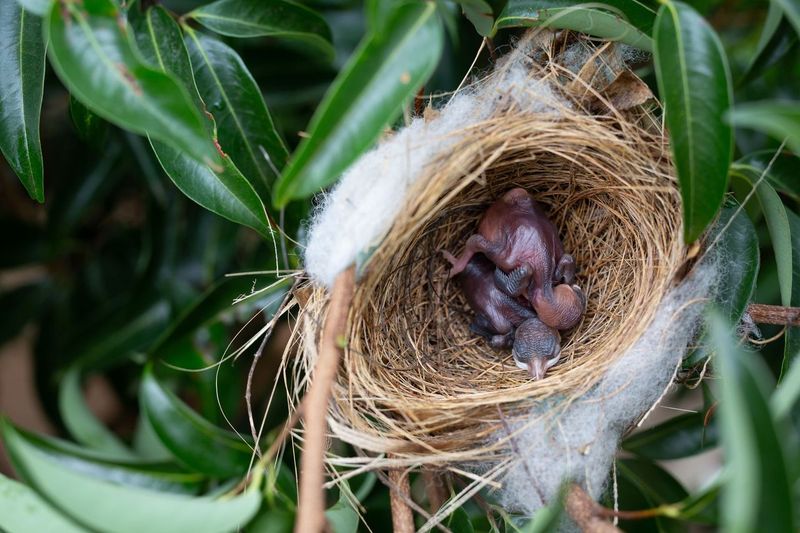
This time of the year I get a lot of calls and questions from concerned people seeing birds that are looking or acting strange. This can be for a variety of reasons—the bird isn’t flying well, their feathers don’t look right, or their coloration could be off. Although this can be alarming and may look strange, most of the time these things are completely normal. Here are some of the reasons birds may be looking strange in your yard this time of the year.
In the summer and into the fall there are a lot of baby birds leaving their nests and that process can look very awkward. Once they are about two weeks old, most young birds leave their nests in this stage of development called the fledgling phase. These birds usually can’t fly yet due to their feathers not being fully grown, but they hop along the ground or on branches while they chirp and flutter their wings. This behavior may look like the bird is in trouble or struggling, but it is a completely natural part of their development process. During this time, the fledgling’s parents are usually very close nearby, and will continue to come to the young bird to feed it for a few days. Once they are able to fly, you will often see this begging behavior at bird feeders. The young bird will follow its parents to the bird feeder and flap its wings incessantly until the parent feeds it. If you ever do come across a very small bird that is featherless and blind that you fear did fall out of its nest, it can be placed back in the nest if you are able to find it. There is a myth that the parents of the young bird will abandon it if they smell a human’s scent on it, but that is not true.
Color variations in birds do occur commonly enough where you may see some examples of this in your backyard. While they are molting and getting their adult plumage, birds can look silly and spotted in general. Some birds, like birds of prey and gulls, can take years to reach their adult plumage, but most songbirds will have their adult plumage within their first year of life. Most songbirds will undergo a full molt after breeding season in the summer and then a partial molt before breeding season. Sometimes, birds and other animals will exhibit traits where they are lacking coloration called “leucism” or have a lot of dark coloration called “melanism.” If you see a bird with patches of white on its body, that is an example of leucism. It is a lack of pigment that may result in just a small white patch on the animal, or sometimes the animal will be lacking pigment on most of its body. Sometimes this leucism will be evident on the bird molt after molt, sometimes it will disappear after a molt of their feathers. Leucism is unlike albinism because the animal does have some pigment and does not have a red eye. It is very rare to see an albino animal in the wild, due to them being sensitive to light and more susceptible to predators. If you see an animal with dark patches on its feathers or fur, that is melanism. This is from an increase in dark pigmentation in the body. A good example of this are the black squirrels that can be found in pockets around the area. These are gray squirrels that are exhibiting melanism.
One of the most striking things you may see at your bird feeders this season is bald birds! Some birds, especially Northern Cardinals and Blue Jays, may molt all the feathers on their heads at once. Most birds will molt their feathers gradually, but that is not always the case. This causes the birds to look like tiny vultures at your feeders. It looks very bizarre, but it does not harm the bird in any way. After about a week the feathers will start to grow back, and the bird will be fully feathered again. In some rare cases it could be due to sickness or feather mites, but usually it is just due to the natural molting process.
These are some of the behaviors and abnormalities you might experience in the backyard this season. While seeing a baby bird hopping on the ground or a bald songbird can be jarring, it is best to let them be. Usually, the bird will be on its way or looking back to normal within days or a week. By allowing nature to take its course, you can ensure the best outcome for these birds and nature in your backyard.
Liz Magnanti is co-owner of the Bird House in Brighton.
Views: 17





